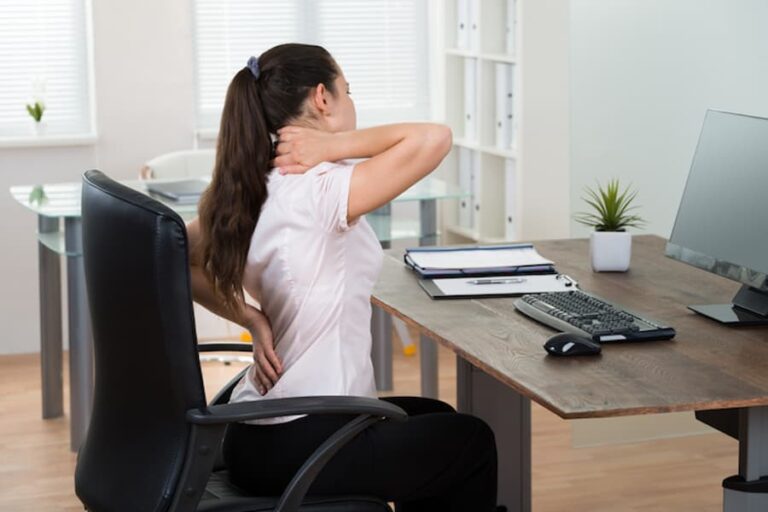Introduction
A common complaint of individuals of all ages and lifestyles is neck pain. It can cause anything from a minor annoyance to severe, chronic pain that keeps daily tasks interfered with. Usually brought on by bad posture, muscular strain, or injury, neck pain may be irritating and incapacitating. Correcting neck pain, encouraging rehabilitation, and avoiding future problems all depend on orthopedic equipment. This article will go over several types of orthopedic equipment meant to relieve neck pain: orthopedic pillows, braces, collars, ergonomic supports, and therapeutic instruments.
Cervical Pillows: Support for Restful Sleep
Correcting poor sleep posture is one of the most crucial components of neck pain management. Designed to offer the correct amount of support to the neck as you sleep, cervical pillows—also called orthopedic pillows—help to preserve the natural curvature of the cervical spine.
Though they exist in several forms and materials, cervical pillows usually have curves that allow head and neck to rest in the best possible posture. Usually, with higher borders to support the neck, they have a lower part for the head. Made from memory foam, some cervical pillows fit the neck’s curves and offer customised support. Others could include more stiff or flexible elements, including built-in neck rolls or inflated variants.
Neck Braces and Collars: Stabilising and Immobilising the Neck
Particularly for acute neck pain or injury, neck restraints and collars are sometimes utilised for temporary relief. Their intended purpose is to restrict cervical spine range of motion, therefore supporting and stabilising the neck. Often used following whiplash injuries, ruptured discs, or post-surgery rehabilitation, these devices help in healing by reducing further strain.
Soft Cervical Collars
Usually used for mild to moderate neck pain, soft cervical collars are constructed from foam or other lightweight materials. Their cradling of the neck and prevention of too much movement provide mild support. Usually advised for problems like muscular strain or stress, these collars can be worn for a few hours a day or overnight.
Rigid Cervical Collars
Made from tougher materials, including plastic, rigid cervical collars provide greater support than soft collars. Usually used following accidents or procedures requiring the neck to be immobilised for a length of time, they A stiff collar may be worn for extended periods of time and limits neck mobility to aid in healing and stop further damage. Although they help to stabilise the neck, stiff collars should be worn under medical supervision to prevent any muscular weakness from lengthy usage.
Ergonomic Supports: Reducing Strain from Daily Activities
Changing your surroundings to be more ergonomic will help you avoid neck pain rather effectively. Especially during tasks like sitting at a desk, driving, or using a computer or smartphone, orthopedic ergonomic supports are meant to maximise posture and lower neck strain.
Ergonomic Chairs and Cushions
Maintaining a decent posture and lessening neck strain depend on a suitable ergonomic chair, particularly for those who spend much time seated. Adjustable elements of an ergonomic chair—such as seat height, backrest angle, armrests, and lumbar support—help to guarantee correct alignment of the spine, especially the neck.
Furthermore by supporting the natural curve of the spine, ergonomic cushions or seat pads can aid to enhance comfort and posture. While seated, a lumbar roll or a cushion with memory foam can help to promote correct spinal alignment, therefore preventing the head from slumping forward or the neck from straying back.
Desk Stands and Laptop Elevators
Often encouraging users to gaze down, laptops and cellphones can cause “tech neck,” a disorder marked by neck stiffness from extended forward head position. By raising the screen to eye level, desk stands or laptop elevators help to avoid the user straying their neck downward.
Adjustable Height Desks
Users with adjustable height workstations can change between seated and standing positions all during the day. By avoiding protracted static positions, this flexibility can help to lessen the strain on the muscles in the neck and back. Standing requires keeping an upright posture with relaxed shoulders and head aligned with the spine.
Phone Holders and Hands-Free Devices
Especially when you hold a phone between the shoulder and ear, using it without appropriate support might strain your neck. By letting the user maintain a neutral posture during calls, phone holders or hands-free Bluetooth headsets help relieve this strain.
Conclusion
Though it can be a crippling disorder, neck pain can be relieved and long-term rehabilitation encouraged with the correct orthopedic equipment. From braces that immobilise the neck following an accident to cervical pillows that promote sleep posture, a variety of items can assist ease pain and stop more damage. For many types of neck pain, ergonomic supports, heat and cold treatment, and TENS machines can also be quite helpful.
Visit Classyworld for more informative blogs


